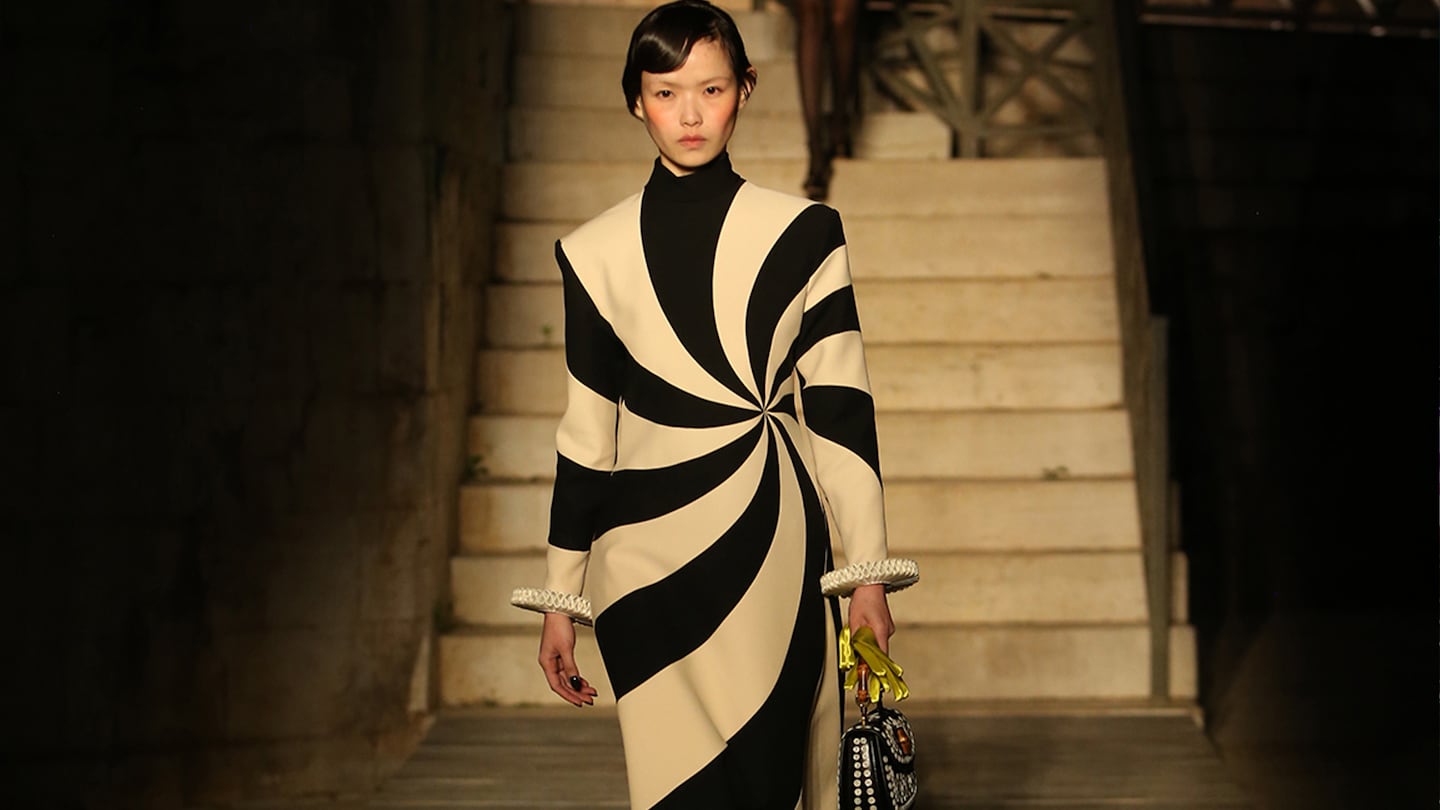
The Business of Fashion
Agenda-setting intelligence, analysis and advice for the global fashion community.

Agenda-setting intelligence, analysis and advice for the global fashion community.

On page 22 of Gucci’s presentation at parent company Kering’s recent capital markets day, there was an interesting announcement: the Italian megabrand has partitioned its creative department.
While Alessandro Michele remains Gucci’s sole creative director, a longtime deputy is now dedicated to the development of the brand’s commercial collections in the newly created role of design studio director, reporting to him. Meanwhile, Maria Cristina Lomanto has been recruited to oversee merchandising and brand elevation as executive vice president, brand general manager.
In the late 2010s, Gucci delivered one of the most successful turnarounds in the history of the modern luxury industry. The new baroque aesthetic invented by Michele, masterful merchandising brought by Jacopo Venturini, and impeccable execution orchestrated by Bizzarri powered Gucci’s rapid acceleration from 2016 to 2019.
The brand was key to defining “new luxury” and has brought new product categories to the sector with its original interpretation of streetwear. Rival Louis Vuitton followed in Gucci’s footsteps, with its Supreme collaboration (2017) and hiring of Virgil Abloh to lead its menswear (2018).
ADVERTISEMENT
Historically, Gucci has found consumer relevance when it’s exuberant. Luxury brands, with their unique DNAs, are like different animal species in nature. Some of them are more demure and more stable. Gucci’s past suggests that the Florentine brand does best when it’s over the top.
Designer Tom Ford succeeded in putting Gucci centre stage by dialling up its sex factor, both on the catwalk and in daring advertising campaigns that were banned in some markets. Michele tapped a similar exuberance, albeit channelled into a very different look. By contrast, a craftsmanship- and heritage-driven play under Frida Giannini was less successful.
Now, Michele’s Gucci is showing signs of consumer fatigue. The label seems to have lost its spark, falling significantly behind top rivals on organic growth. When a brand slows, there are a thousand reasons, of course.
At the epicentre of Gucci’s woes are the Chinese. The repatriation of Chinese luxury spend since the pandemic has meant a significant price increase for Chinese consumers relative to what they could spend on the same goods on trips to Europe before Covid-19. This is particularly troublesome for Gucci, as the Chinese were the first to enthusiastically embrace the brands revamp under Bizzarri and Michele.
At this stage, as Gucci delivers more of the same aesthetic, it’s quite likely that some Chinese consumers have dropped the brand from their shopping lists: why buy more of the same (at a higher price) when one has a lot in one’s wardrobe already? Gucci’s senior management in China must take some of the blame for this, but is that really the underlying issue?
The reorganisation of Gucci’s creative department is a step forward. With more space to innovate, Michele must reinvent Gucci again, while the newly promoted design studio director oversees commercial collections and Maria Cristina Lomanto oversees merchandising and a brand elevation push. If they succeed, then wonderful.
But if Michele were to fail to reignite consumer interest for Gucci, then replacing him further down the road could be less of a shock with a new structure in place.
As much as Kering’s smaller brands, like Saint Laurent and Balenciaga, are doing extremely well, all eyes remain on Gucci, still the most important contributor to group profits. Senior management is aware that they need to shift gears at Gucci and they are doing that. That is, in itself, a good sign. But re-energising the brand without new creative inputs may be unlikely at this point.
ADVERTISEMENT
If all goes to plan, Gucci is likely to improve gradually. Is that enough to deliver on the ambition to grow sales to €15 billion announced at Kering’s recent capital markets day? Perhaps a little patience is warranted at this stage. But for how long?
Luca Solca is head of luxury goods research at Bernstein.
Editor’s Note: This article was amended on 28 June 2022. A previous version of this article misstated that Maria Cristina Lomanto oversees the development of Gucci’s commercial collections. She does not. Gucci’s commercial collections are overseen by the brand’s design studio director, a newly created role. Maria Cristina Lomanto oversees merchandising in another newly created role, executive vice president, brand general manager.
The Coach owner’s results will provide another opportunity to stick up for its acquisition of rival Capri. And the Met Gala will do its best to ignore the TikTok ban and labour strife at Conde Nast.
The former CFDA president sat down with BoF founder and editor-in-chief Imran Amed to discuss his remarkable life and career and how big business has changed the fashion industry.
Luxury brands need a broader pricing architecture that delivers meaningful value for all customers, writes Imran Amed.
Brands from Valentino to Prada and start-ups like Pulco Studios are vying to cash in on the racket sport’s aspirational aesthetic and affluent fanbase.